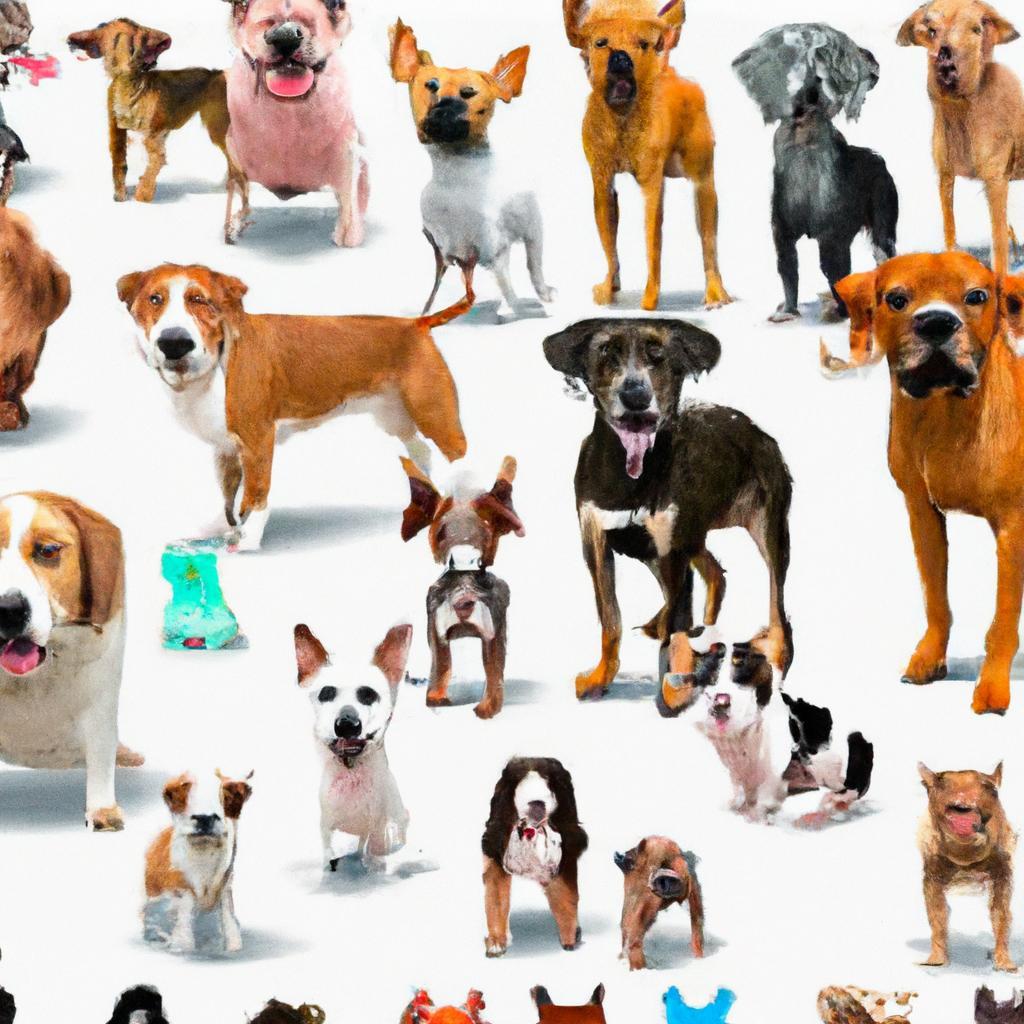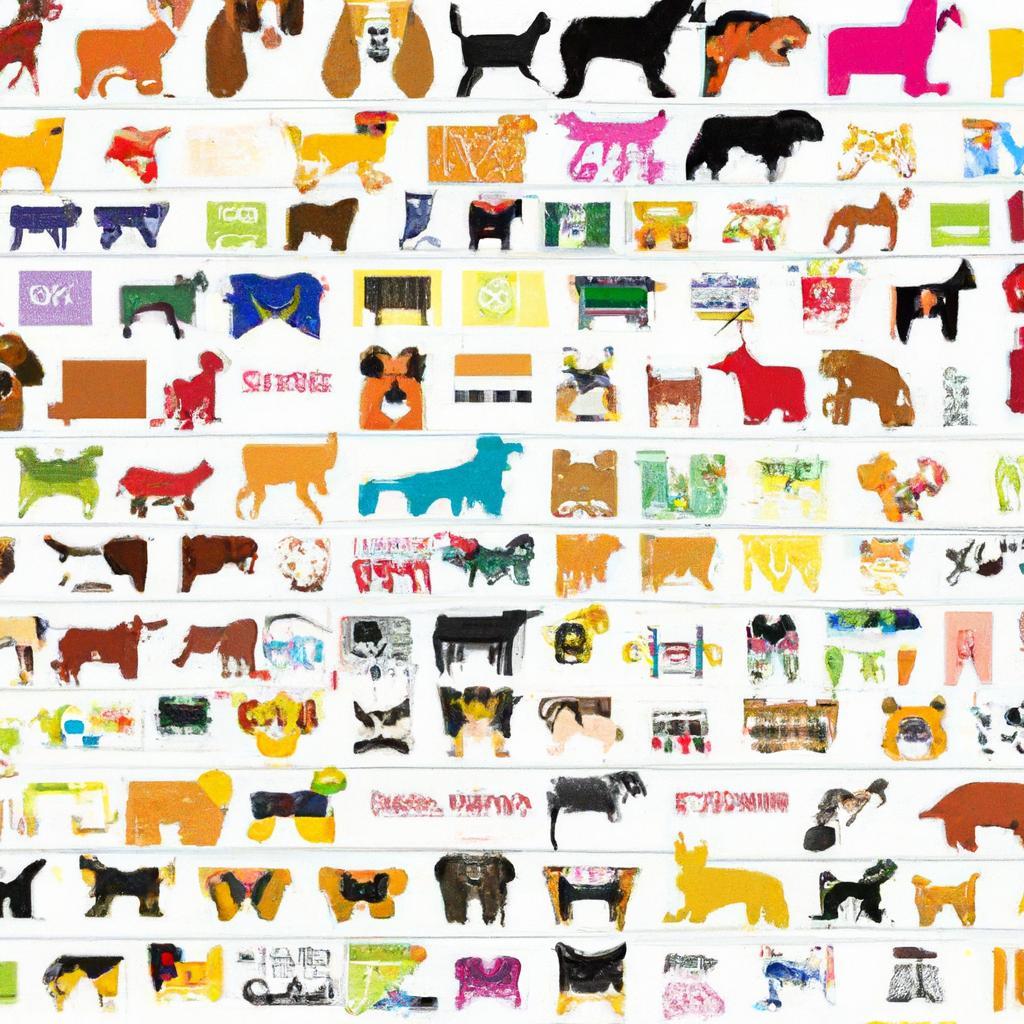Imagine walking into a bustling dog park, where every corner reveals a new furry friend. From the tiny, spirited Chihuahua to the majestic Great Dane, the diversity is astounding. But have you ever wondered just how many dog breeds exist? Currently, there are over 340 recognized breeds worldwide, each with unique traits and histories. This incredible variety not only showcases nature’s creativity but also offers countless options for companionship. Embrace the joy of finding your perfect match among these remarkable breeds—your future best friend awaits!
Contents
- Understanding the Diversity of Dog Breeds and Their Origins
- The Role of Breed Standards in Classification and Recognition
- Exploring the Benefits of Mixed Breeds in Modern Society
- Guidelines for Choosing the Right Dog Breed for Your Lifestyle
- Q&A
Understanding the Diversity of Dog Breeds and Their Origins
The world of canines is a vibrant tapestry woven from countless threads of history, culture, and purpose. Each dog breed carries with it a unique story, reflecting the needs and lifestyles of the people who developed them. From the majestic Great Dane, bred for guarding and hunting, to the agile Border Collie, designed for herding, the diversity among breeds is a testament to human ingenuity and the bond we share with these remarkable animals.
Understanding the origins of various breeds can deepen our appreciation for their distinct characteristics. Many breeds trace their lineage back to specific regions, where they were honed to perform particular tasks. For instance, the **Siberian Husky** was developed by the Chukchi people of Siberia for sled pulling, while the **Basenji**, often referred to as the “barkless dog,” has roots in Central Africa, where it was used for hunting. This geographical and functional diversity not only showcases the adaptability of dogs but also highlights the cultural significance they hold in different societies.
Moreover, the classification of dog breeds is not merely a matter of aesthetics; it encompasses a wide range of traits, including size, temperament, and energy levels. Breeds can be grouped into categories such as **working**, **herding**, **sporting**, and **toy**, each serving a unique role in human life. This classification helps potential dog owners make informed decisions based on their lifestyle and preferences. For example, families with young children might gravitate towards breeds known for their gentle nature, such as the **Golden Retriever**, while active individuals may prefer the spirited **Jack Russell Terrier**.
As we delve deeper into the world of dog breeds, it becomes evident that each one is a reflection of its history and purpose. The sheer variety of breeds available today, estimated to be over **340 recognized breeds worldwide**, showcases the incredible journey of domestication and selective breeding. By embracing this diversity, we not only celebrate the unique qualities of each breed but also foster a greater understanding of the responsibilities that come with dog ownership. Whether you are drawn to the elegance of a **Saluki** or the loyalty of a **German Shepherd**, there is a breed that perfectly aligns with your lifestyle and values.
The Role of Breed Standards in Classification and Recognition
Breed standards serve as the backbone of canine classification and recognition, providing a framework that defines the ideal characteristics of each breed. These standards are meticulously crafted by breed clubs and organizations, ensuring that specific traits—such as size, coat type, color, and temperament—are consistently maintained. This uniformity not only helps in preserving the unique qualities of each breed but also aids potential dog owners in making informed decisions about which breed may best suit their lifestyle.
Moreover, breed standards play a crucial role in the judging process at dog shows and competitions. Judges rely on these established criteria to evaluate dogs, ensuring that they adhere to the ideal specifications set forth by their respective breed standards. This not only promotes fairness in competition but also encourages breeders to strive for excellence in their breeding practices. As a result, the adherence to these standards fosters a culture of responsibility and accountability within the breeding community.
In addition to their role in competitions, breed standards also contribute significantly to the recognition of new breeds. Organizations such as the American Kennel Club (AKC) and the Fédération Cynologique Internationale (FCI) have specific guidelines that must be met for a breed to gain official recognition. This process involves thorough evaluations of the breed’s history, characteristics, and population stability, ensuring that only breeds that meet stringent criteria are acknowledged. Such rigorous standards help maintain the integrity of the canine world and protect the interests of both dogs and their owners.
Ultimately, the importance of breed standards extends beyond mere classification; they are essential for the health and well-being of dogs. By promoting responsible breeding practices and discouraging the proliferation of unhealthy traits, these standards help mitigate the risk of genetic disorders and health issues within breeds. This commitment to the welfare of dogs not only enhances the quality of life for individual animals but also enriches the bond between dogs and their human companions, fostering a deeper understanding and appreciation for the diverse world of canine breeds.
Exploring the Benefits of Mixed Breeds in Modern Society
In today’s diverse world, mixed-breed dogs are gaining recognition for their unique qualities and contributions to society. These dogs often embody the best traits of their parent breeds, resulting in a combination of physical characteristics and temperaments that can suit a variety of lifestyles. By embracing mixed breeds, we not only celebrate genetic diversity but also promote healthier canine populations, as hybrid vigor can lead to fewer inherited health issues.
Moreover, mixed-breed dogs often exhibit a remarkable adaptability that makes them ideal companions for families, individuals, and various living environments. Their varied backgrounds can result in a wide range of personalities, allowing potential owners to find a dog that perfectly matches their lifestyle. Whether it’s a playful pup for an active family or a calm companion for a senior citizen, mixed breeds can cater to diverse needs and preferences.
Additionally, adopting mixed-breed dogs from shelters and rescue organizations plays a crucial role in combating the pet overpopulation crisis. By choosing to welcome a mixed breed into your home, you are not only providing a loving environment for a dog in need but also helping to reduce the number of animals in shelters. This act of kindness can inspire others to consider adoption, creating a ripple effect that benefits countless animals and promotes a culture of compassion.
mixed breeds often serve as ambassadors for their species, breaking down stereotypes associated with purebred dogs. Their varied appearances and temperaments challenge preconceived notions about what a “good” dog should be, encouraging society to appreciate the individuality of each animal. By advocating for mixed breeds, we foster a more inclusive attitude towards all dogs, regardless of their lineage, and highlight the importance of love and companionship over pedigree.
Guidelines for Choosing the Right Dog Breed for Your Lifestyle
Choosing the right dog breed is a crucial decision that can significantly impact your lifestyle and overall happiness. To ensure a harmonious relationship with your new furry friend, it’s essential to consider several factors that align with your daily routine and living situation. Start by evaluating your activity level; some breeds thrive on high-energy activities, while others are perfectly content with leisurely strolls around the neighborhood. **Active individuals** may find joy in breeds like Border Collies or Labrador Retrievers, while those who prefer a more relaxed pace might lean towards Bulldogs or Basset Hounds.
Another important aspect to consider is the size of your living space. If you reside in a small apartment, a smaller breed such as a French Bulldog or a Dachshund may be more suitable. Conversely, if you have a spacious home with a yard, larger breeds like Golden Retrievers or German Shepherds can flourish. **Assessing your environment** will help you determine which breeds can comfortably adapt to your lifestyle, ensuring both you and your dog are happy in your living situation.
Additionally, think about your family dynamics and any existing pets. Some breeds are known for their friendly and sociable nature, making them great companions for families with children or other animals. Breeds like Cavalier King Charles Spaniels and Beagles are often praised for their gentle temperament. On the other hand, if you have a more reserved household or older children, breeds such as Shiba Inus or Chow Chows may be a better fit. **Understanding your family’s needs** will guide you in selecting a breed that complements your household.
Lastly, consider the time and resources you can dedicate to grooming, training, and healthcare. Some breeds require regular grooming and maintenance, while others are low-maintenance. For instance, Poodles and Shih Tzus need frequent grooming, whereas breeds like Boxers or Vizslas have minimal grooming needs. **Evaluating your commitment** to these responsibilities will help you choose a breed that fits seamlessly into your life, allowing you to enjoy a fulfilling companionship without feeling overwhelmed.
Q&A
-
How many dog breeds are officially recognized?
As of now, there are over 340 recognized dog breeds worldwide, according to various kennel clubs and organizations. The American Kennel Club (AKC) recognizes 197 breeds, while the Fédération Cynologique Internationale (FCI) recognizes 360 breeds. This number can vary as new breeds are developed and recognized.
-
What factors contribute to the number of dog breeds?
The diversity in dog breeds arises from several factors, including:
- Geographic location: Different regions have developed breeds suited to their environments.
- Purpose: Breeds have been created for specific tasks, such as herding, hunting, or companionship.
- Genetic variation: Selective breeding has led to the development of distinct physical and behavioral traits.
-
Are all dog breeds suitable for every owner?
No, not all dog breeds are suitable for every owner. Each breed has unique characteristics, energy levels, and care requirements. It’s essential to consider factors such as:
- Living situation: Some breeds thrive in apartments, while others need large yards.
- Activity level: High-energy breeds require more exercise and mental stimulation.
- Allergies: Some breeds are more hypoallergenic than others.
-
How can I choose the right breed for me?
Choosing the right dog breed involves careful consideration of your lifestyle and preferences. Here are some tips:
- Research breeds: Learn about different breeds’ temperaments, sizes, and needs.
- Assess your lifestyle: Consider your activity level, work schedule, and family dynamics.
- Consult professionals: Speak with breeders, trainers, or veterinarians for personalized advice.
the vast array of dog breeds reflects the incredible diversity and adaptability of our canine companions. Understanding this variety not only enriches our appreciation for dogs but also helps us choose the perfect breed for our lifestyles. Embrace the journey of discovery!

大家好,我是彼得潘,專業的手法身體治療師。我喜歡探索和研究各種主題,並透過與人工智慧的合作分享專業、實用、有趣的文章。我們定期進行人工審核,以確保內容的準確性。如果您發現文章中有任何不準確的地方,請隨時與我們聯繫,我們會及時糾正。您可以透過 [email protected] 與我們聯繫。



